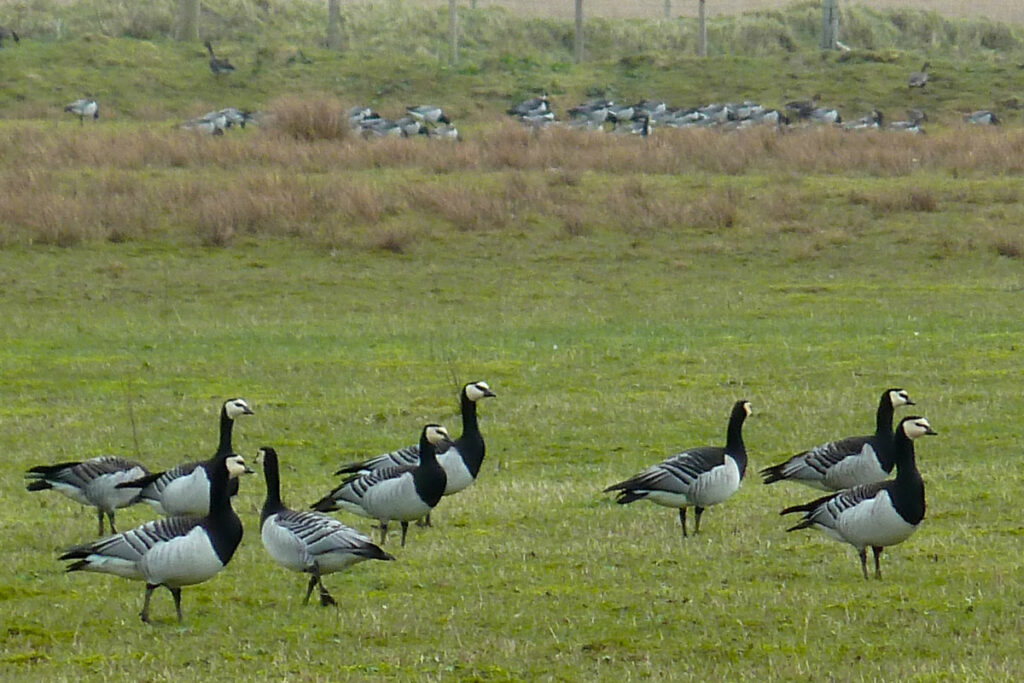
By Megan Lock, GWCT Advisor
While walking along the south coast this weekend doing a bit of birdwatching, I stumbled across a piece of rubbish washed up on the beach – a shoe. Nothing unusual unfortunately to see so much litter on the beach (although I always try to pick up at least five pieces of rubbish on each beach walk), but this piece of rubbish was quite special, as attached to the discarded shoe was a lonesome goose barnacle (Lepas anatifera). A curious-looking crustacean, and it got me thinking of the old story I once heard many years ago about these small barnacles and a migratory species that visits the UK every year, the barnacle goose (Branta leucopsis).
Barnacle geese are one of our smallest geese, with a wingspan of around 1.3m, weighing 1.7kg and an average lifespan of around 14 years. The delicate-looking bird has a relatively small, rounded head and a very short bill, with a creamy-white face, a black neck, black-and-grey wings, and a white belly. Unlike the Canada goose, the barnacle goose has no brown on it at all.
These striking black and white geese are common winter visitors to the north and northwest of England, Scotland and Ireland; grazes on vegetation, such as roots, stems, leaves and seeds; and can be seen on farmland, freshwater and wetland habitats, gravel pits and park lakes. However, they only stay here around five months until March, when they return to Greenland and Svalbard to nest in the spring.
How is this barnacle goose related to a crustacean, I hear you ask, and what is this story? Well, it was once thought, in a time before migration of birds was understood, that barnacle geese hatched out of goose barnacles. This belief grew because no one had ever seen a barnacle goose nest or egg before, and goose barnacles have black and white stripes, which resembled the barnacle goose’s head. So, it was decided that the geese must hatch from the barnacles attached to ships at sea, as the goose barnacle shells would be found washed up on the beaches in autumn, which coincided with the time the barnacle geese would arrive here in the UK. I guess it seemed logical to people back then…
As a result, barnacle geese were an important part of medieval cuisine. Since they were believed to be produced from barnacles, Christians classified these geese as fish and therefore could eat their flesh on Fridays and during Lent, despite the church’s ban on eating meat at these times, because it was believed not ‘born of the flesh’.
A group of geese has many collective nouns, including a ‘blizzard’, ‘chevron’, ‘knot’, ‘plump’ and ‘string’ of geese.
